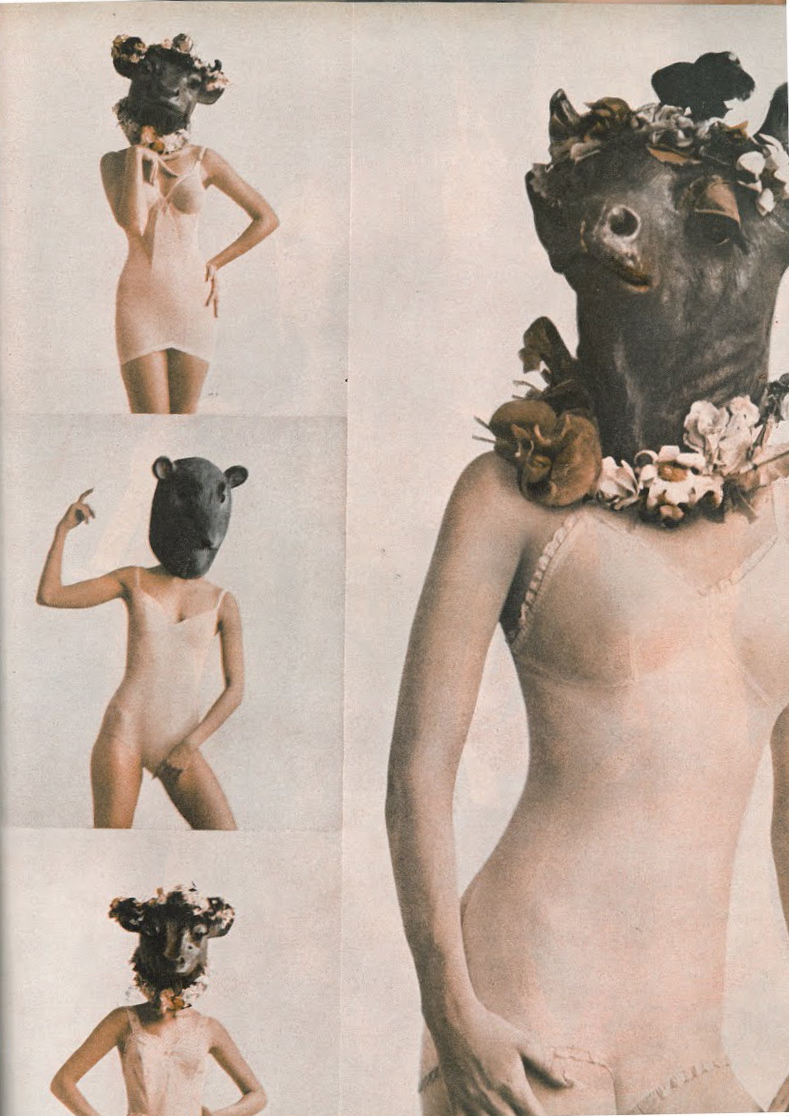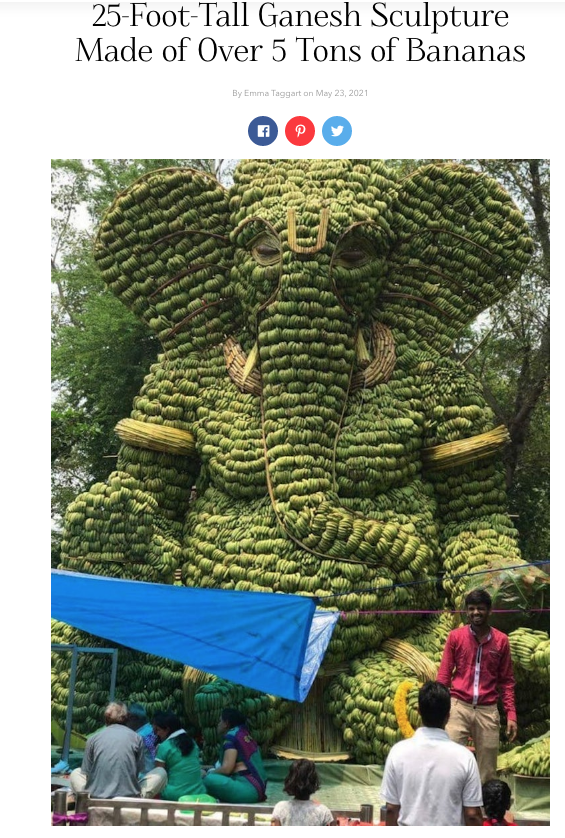Animals
The Attack-Trained Iguanas of Irenee du Pont
Irénée du Pont was president of the Du Pont Company from 1919 to 1925, and remained on its board of directors until 1958.He built a mansion named Xanadu down in Cuba, where he trained iguanas to attack and kill on his command. Details from Du Pont Dynasty: Behind the Nylon Curtain by Gerard Colby:

"Irénée du Pont, 80, bends to pat an iguana on his Cuban estate where many of these lizards wander. He feeds them papaya from jar he holds"
Life - Aug 19, 1957
Posted By: Alex - Wed Sep 08, 2021 -
Comments (5)
Category: Animals, Eccentrics
Crocodile Teasing at the Sriracha Tiger Zoo
The head in mouth bit comes after the four-minute mark.The Wikipedia page.
Posted By: Paul - Thu Aug 26, 2021 -
Comments (0)
Category: Animals, Death, Fairs, Amusement Parks, and Resorts, Asia
1965 Vogue Lingerie Feature
To see larger images of every page, go to link.CAUTION: NSFW pop-ups might intervene!


Posted By: Paul - Fri Aug 13, 2021 -
Comments (0)
Category: Animals, Anthropomorphism, Fashion, Underwear, Surrealism, 1960s
Madeleine Ravier’s Bicycle for Animals
Humans have invented mechanical devices, such as bicycles, that allow us to move faster by amplifying the power of our limbs. Madeleine Ravier of Paris argued that what works for people should also work for animals. So she invented and, in 1907, patented a "Cycles pour animaux," or 'bicycle for animals'.Her patent is in French, but the automatic translation is fairly comprehensible. Here's part of it.
Quite recently (less than 50 years ago), understanding the imperfection of his own limbs, he endowed them with mobile mechanisms, he put cycles, devices formed of 2 or 3 wheels between the legs. and of a few light and simple organs, with which he has prodigiously increased the extent of his movements without the help of external energy.
He thus achieved 370 kilometers in 12 hours (cyclist Cadolle), and even 45,764 kilometers (record of cyclist Bouhours), while excellent athletes, on their limbs, did not achieve, at most, at the same time of 12 hours than the already very high distances of 113 kilometers (walker 5o Hibbird) or ikh kilometers (rowell runner)....
What man did for himself he can do it for animals, or at least for some of them; There is a way to increase the efficiency of their limbs by the intercalation, between these limbs and the field of motion, of mechanical devices receiving the reciprocating motion of the limbs, transforming it into continuous rotary motion, and ending in rotating parts; and the result obtained can be used to make animals move man faster and farther than has hitherto been done by using them.
Ravier imagined making bicycles for all kinds of animals including "mules, donkeys, elephants, camels, dromedaries, etc.". But she started with a bicycle for horses, as shown below.

I have no idea if she ever built and tested one of these horse bicycles. The language barrier makes researching this a challenge.
Posted By: Alex - Sun Aug 08, 2021 -
Comments (5)
Category: Animals, Bicycles and Other Human-powered Vehicles, Inventions, Patents, 1900s
Giant Cat Billboard
Other videos and article here.
Posted By: Paul - Mon Jul 12, 2021 -
Comments (0)
Category: Animals, Excess, Overkill, Hyperbole and Too Much Is Not Enough, Technology, Advertising, Giant People in Ads, Asia
Company seeks frozen sparrows
1978: The Taiei Company of Japan contacted the U.S. State Department seeking an American company willing to provide it with frozen sparrows "at regular intervals". The company was ready to "give guidance on how to catch small birds and how to process them".
Bangor Daily News - Jan 14, 1978
According to the British Food History site, sparrows used to be a common part of the British diet.
Posted By: Alex - Mon Jun 28, 2021 -
Comments (2)
Category: Animals, Food, 1970s
Horse Spike
In 1899, Patent No. 636,430 was granted to Franz and Konrad Hieke of Philadelphia for what they described as "cavalry equipment". It was essentially a large spike attached to the front of a horse. From their patent:
A better view:

Argos Reflector - Feb 8, 1900
I wonder if one of these was ever actually used in combat?
Posted By: Alex - Tue Jun 22, 2021 -
Comments (3)
Category: Animals, Inventions, Patents, Weapons, Nineteenth Century
Boar Mate

Miami Herald - Jun 08, 1979
It's available for purchase here.

Posted By: Alex - Sat Jun 12, 2021 -
Comments (2)
Category: Animals, 1970s, Attractiveness, Sexiness, Allure and Personal Magnetism
The Boy Fancier
Published in 1912, the title of this book really hasn't aged well. Although even in 1912 I imagine the title could easily have been misconstrued.Looking up the word 'fancier' in the dictionary, I found that it means: "a connoisseur or enthusiast of something, especially someone who has a special interest in or breeds a particular animal." I hadn't known that the word had this association with animal breeding.
Nature offered this review of the book:

Posted By: Alex - Wed May 26, 2021 -
Comments (5)
Category: Animals, Books, 1910s
Banana Ganesh
Read all about it here.
Posted By: Paul - Mon May 24, 2021 -
Comments (3)
Category: Animals, Art, Statues and Monuments, Food, Religion, Bananas

| Who We Are |
|---|
| Alex Boese Alex is the creator and curator of the Museum of Hoaxes. He's also the author of various weird, non-fiction, science-themed books such as Elephants on Acid and Psychedelic Apes. Paul Di Filippo Paul has been paid to put weird ideas into fictional form for over thirty years, in his career as a noted science fiction writer. He has recently begun blogging on many curious topics with three fellow writers at The Inferior 4+1. Contact Us |




